I have an input table with 3 columns (Person_Id, Visit_Id (unique Id for each visit and each person) and Purpose) as shown below. I would like to generate another new column which provides the immediate preceding visit of the person (ex: if person has visited hospital with Visit Id = 2, then I would like to have another column called "Preceding_visit_Id" which will be 1 (ex:2, if visit id = 5, preceding visit id will be 4). Is there a way to do this in a elegant manner using mutate function?
Input Table
Output Table
As you can see that 'Preceding_visit_id' column refers the previous visit of the person which is defined using visit_id column
Please note that this is a transformation for one of the columns in a huge program, so anything elegant would be helpful.
Dput command output is here
structure(list(Person_Id = c(1, 1, 1, 1, 1, 2, 2, 2, 2, 2, 2,
3, 3, 3), Visit_Id = c(1, 2, 3, 4, 5, 6, 7, 8, 9, 10, 11, 12,
13, 14), Purpose = c("checkup", "checkup", "checkup", "checkup",
"checkup", "checkup", "checkup", "checkup", "checkup", "checkup",
"checkup", "checkup", "checkup", "checkup"), Preceding_visit_id = c(NA,
1, 2, 3, 4, NA, 6, 7, 8, 9, 10, NA, 12, 12)), class = c("spec_tbl_df",
"tbl_df", "tbl", "data.frame"), row.names = c(NA, -14L), spec =
structure(list(
cols = list(Person_Id = structure(list(), class = c("collector_double",
"collector")), Visit_Id = structure(list(), class = c("collector_double",
"collector")), Purpose = structure(list(), class =
c("collector_character",
"collector")), Preceding_visit_id = structure(list(), class =
c("collector_double",
"collector"))), default = structure(list(), class = c("collector_guess",
"collector")), skip = 1), class = "col_spec"))'''
